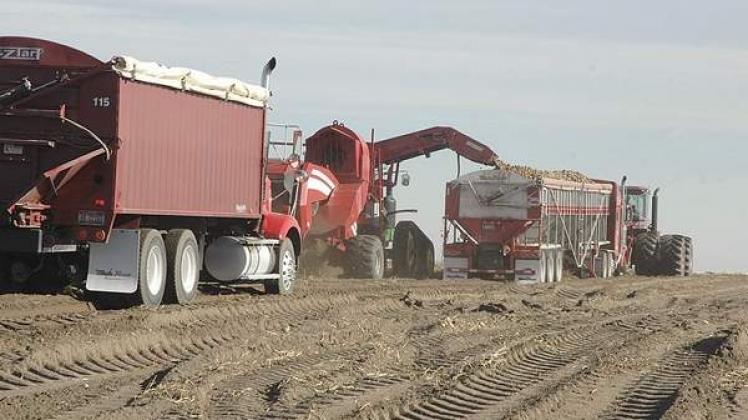EEUU: Spud officials optimistic about prospects for larger crop
Potato industry leaders are optimistic about demand for a fall 2016 spud crop that recent USDA estimates show was slightly larger than the prior year nationally and significantly bigger in the Pacific Northwest.

U.S. production, at 405.172 million hundredweight, was up by 471,000 hundredweight from the 2015 harvest. U.S. growers planted about 20,000 fewer acres this season, but their average yields, at 451 hundredweight per acre, were up 18 hundredweight.
Ideal growing conditions enabled farmers in Idaho, Washington and Oregon to make especially impressive yield gains, and increase combined production by more than 16 million hundredweight.
Idaho growers planted 325,000 potato acres, up by 2,000 acres. Their average yields rose 27 hundredweight per acre to 430 hundredweight, boosting total production by nearly 9 million hundredweight to more than 139 million hundredweight.
Washington growers kept acreage flat at 170,000 acres, but yields averaging 630 hundredweight per acre were up 40 hundredweight from the prior year. The state’s total production was up more than 6 million hundredweight.
Oregon growers also maintained the same spud acreage, planting 39,000 acres. Their yields were up 35 hundredweight per acre, boosting production by nearly 1.4 million hundredweight to 23.146 million hundredweight.
“As far as size of the crop, we knew yields would be up from last year because last year’s weather conditions brought yields off of trend-line,” said Idaho Potato Commission President and CEO Frank Muir.
Muir believes factors have aligned for a down potato market to improve — holiday spud shipments have been about 10 percent ahead of last year’s pace, crop quality and the size profile are ideal, IPC started advertising programs a month early in anticipation of a larger crop and more than 5,000 entries are expected in the organization’s Potato Lovers Month retail display contest. Muir also noted a recent IPC study reaffirmed the Idaho potato brand has inelastic demand — meaning shippers shouldn’t discount their spuds as consumers buy roughly the same volume even when prices rise. IPC is preparing an info-graphic on the elasticity study to show retailers and shippers.
Potatoes USA Chief Marketing Officer John Toaspern sees positive signs for spud demand both domestically and abroad. His organization was recently awarded more than $4.8 million in USDA Market Access Program grants to improve foreign potato access during Fiscal Year 2017 — down 4.5 percent as the agency had less funding to disperse.
However, frozen fry foreign exports have been strengthening, and crop challenges in Europe have him bullish on exports. Other trade partners, such as Taiwan and Korea, will have to import more chipping potatoes due to poor crops, though the recent weakening of the peso has him concerned about prospects in Mexico.
Domestically, Toaspern said, demand for specialty potatoes is on the rise, and the food service sector continues to be a bright spot.
“We see a lot of opportunities, particularly in family dining and the fast casual area,” Toaspern said.
Demand for chips and potato convenience products is also up, he said.
Fuente: http://www.capitalpress.com/Nation_World/Nation/20161201/spud-officials-optimistic-about-prospects-for-larger-crop




